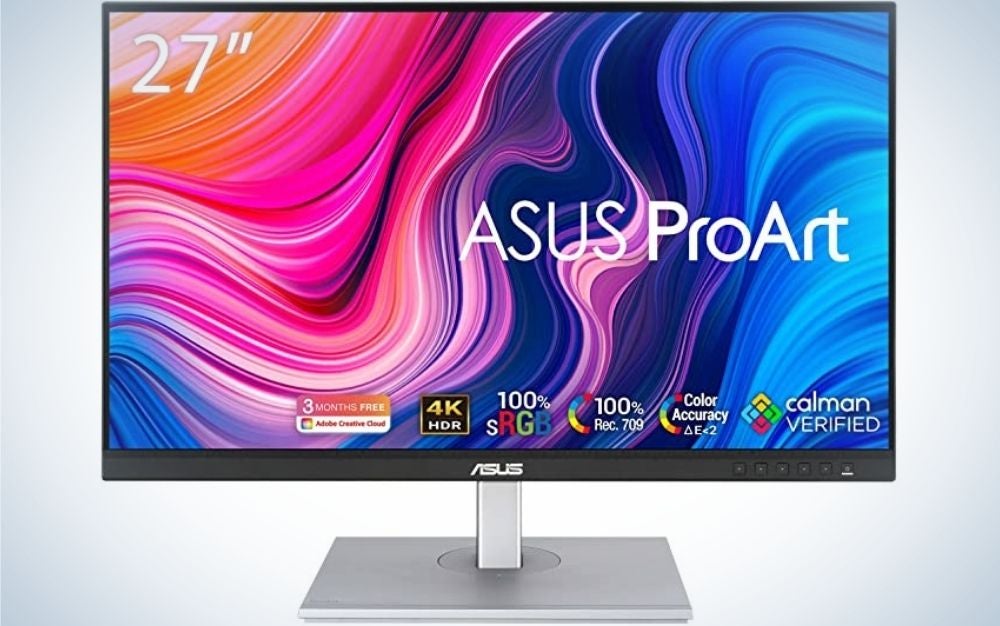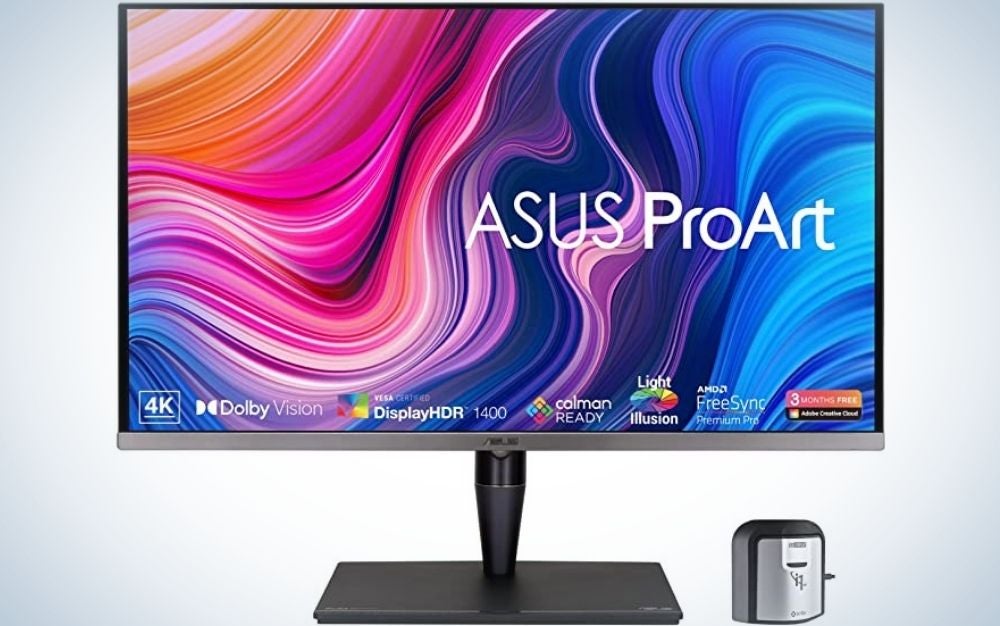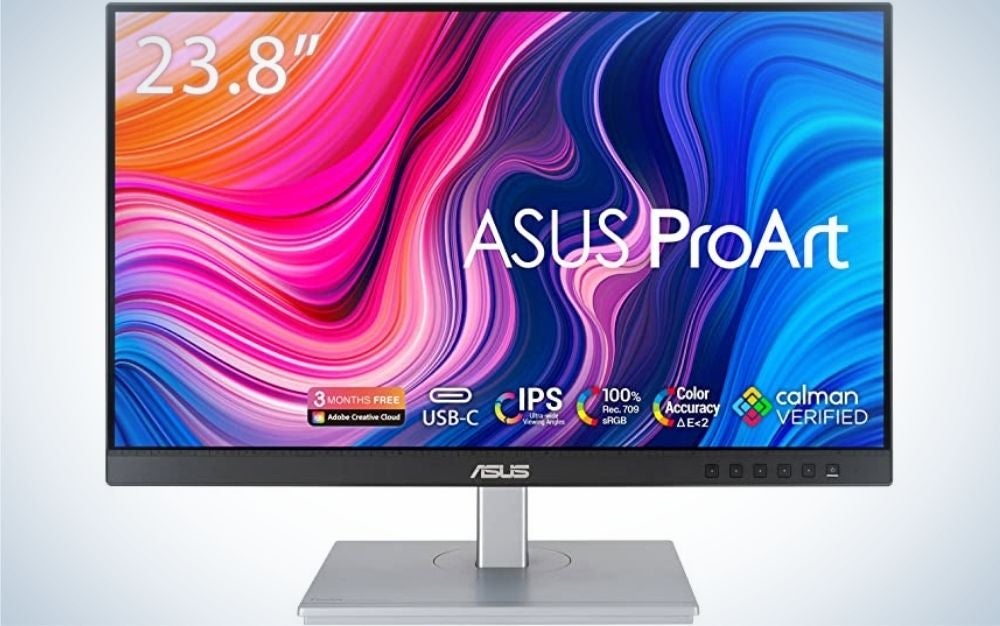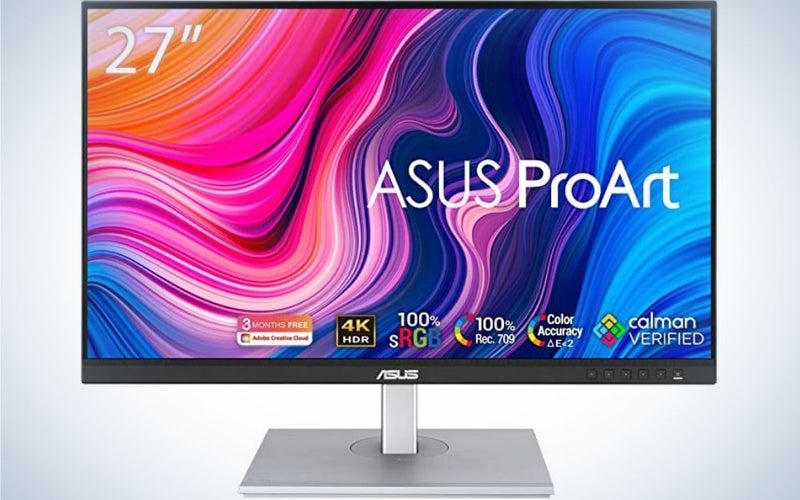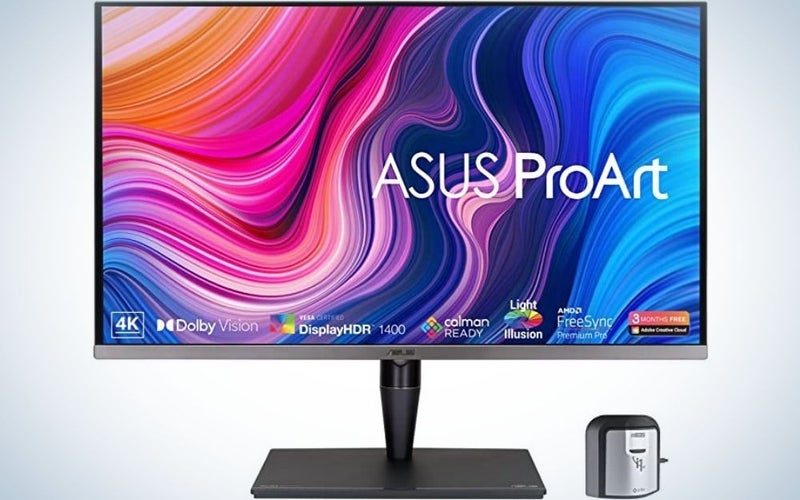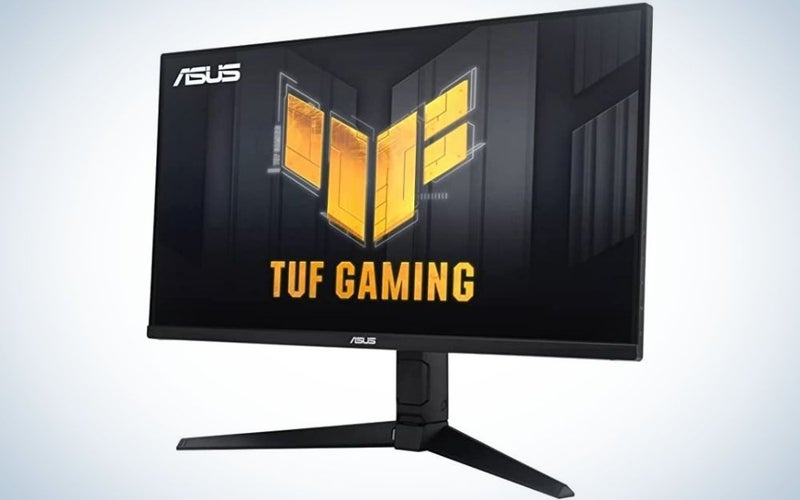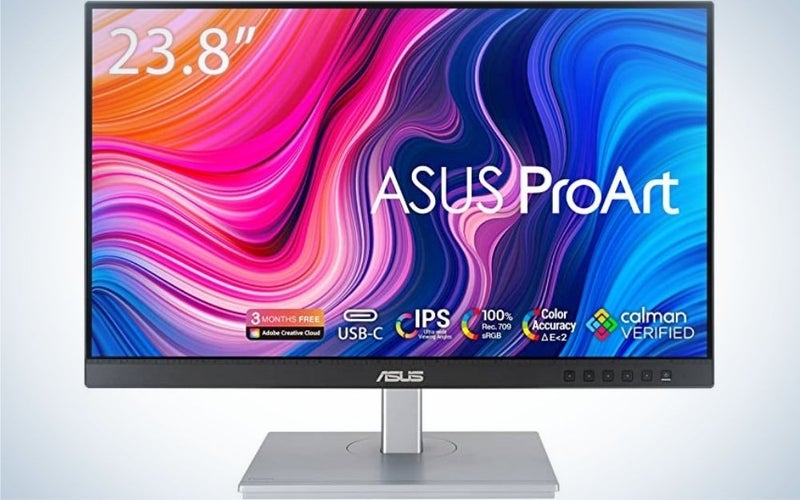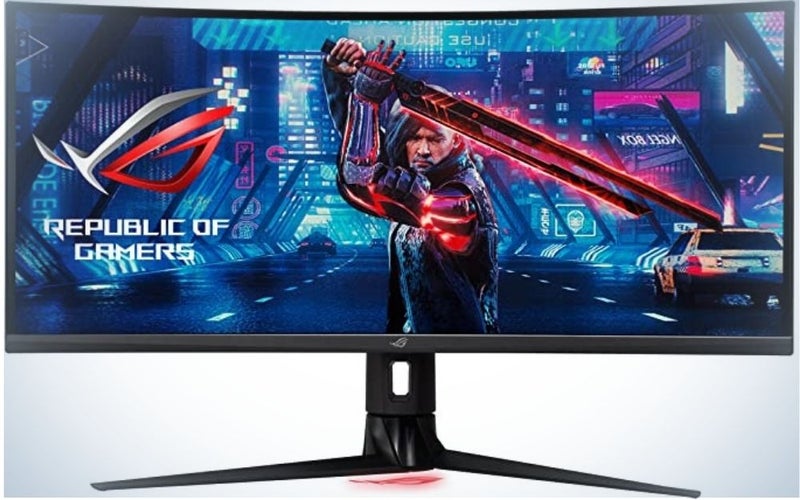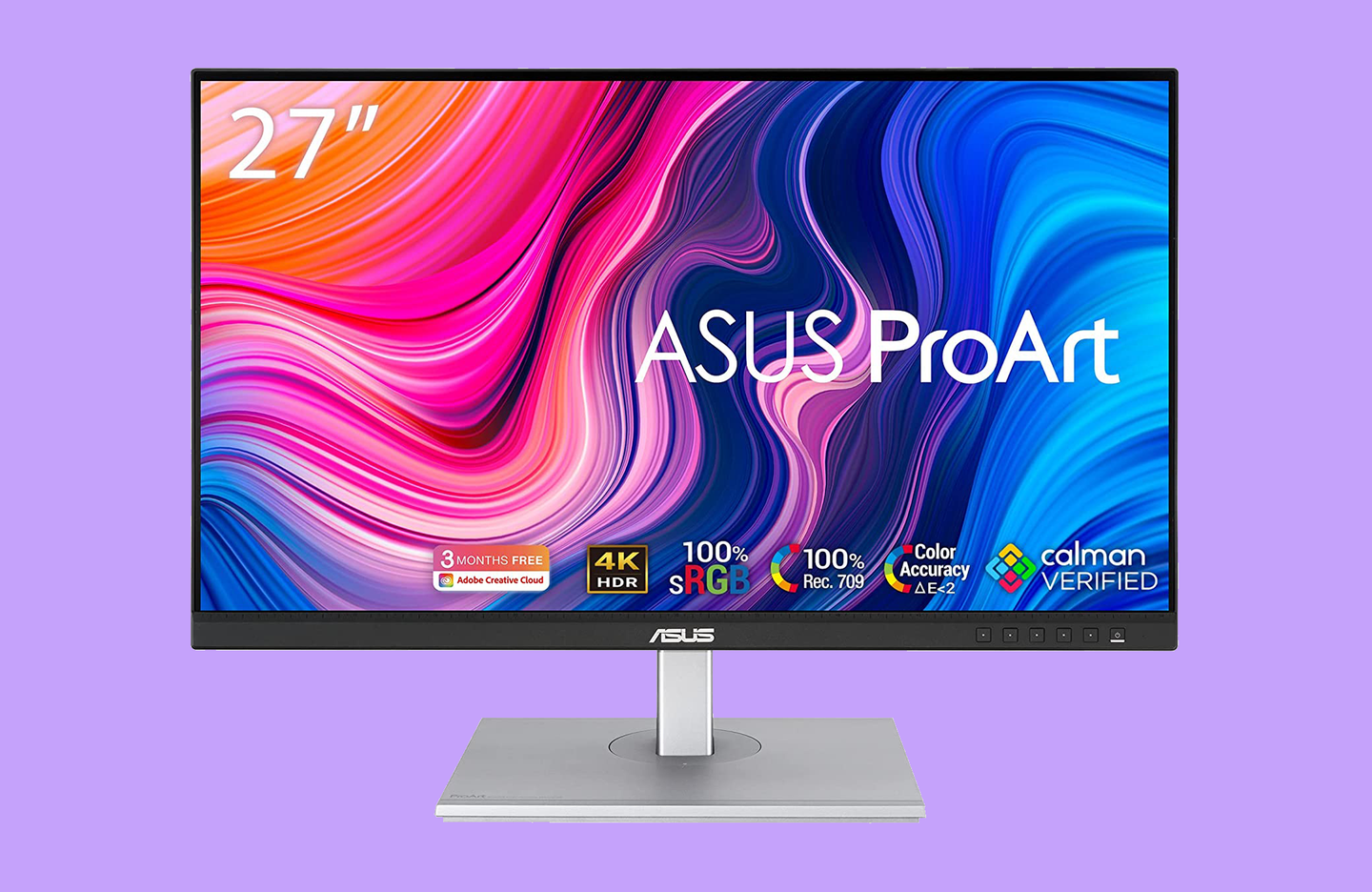
Peruse the selection of Asus monitors and you’ll find a ton of great options for gamers, but you may not know that the company also makes some fantastic displays designed for creatives. Most of the Asus screens meant for photographers, designers, and video editors fall into its ProArt series, but there are great displays across the company’s line that are worth considering for your creative pursuits. We’ve put together this list of the best Asus monitors to satisfy your display requirements whether they’re creating photographic masterpieces, editing epic films, or slaying aliens Half-Life 2 for the 100th time.
- Best overall: Asus ProArt Display PA279CV
- Best Asus 4K monitor: Asus ProArt 32-inch 4K
- Best Asus gaming monitor: Asus TUF Gaming 28” 4K 144HZ DSC
- Best budget asus monitor: Asus ProArt Display PA247CV 23.8”
- Best Asus ultra-wide: Asus ROG Strix 34” Ultra-wide
Things to consider when shopping for the best Asus monitors
Flip through its expansive lineup and you’ll find that the best Asus monitors for creative work address needs specific to photographers, video editors, designers, and other pros. Here are some essential features to consider before you hand over your credit card info.
Size
Monitors have gotten large in recent years. While 32-inch displays seemed outrageous in the past, they are becoming increasingly popular with gamers, creators, and other folks who like sitting a foot away from an enormous, glowing screen.
Right now, you’re most likely to choose something between 24 inches and 32 inches. I personally think 27-inches represents the current sweet spot when it comes to price, performance, and size. That’s because I use a pair of monitors on my desk and two 27-inch displays work perfectly. Some people would prefer one even larger screen. That’s all about personal preference.
You can find some other odd sizes if you move into the world of ultra-wide monitors. Those screens basically mimic several monitors sitting next to each other horizontally. While these displays can be handy, they’re also often curved and include large panels inside, which can have an effect on overall consistency across the screen in terms of brightness and color accuracy.
Resolution
If you’re going to buy a TV right now, 4K is a must and 8K is a flex. In the monitor world, 4K hasn’t achieved that kind of dominance just yet. Right now, 1440p is having a moment. It provides enough screen real estate to show a high-res image along with the interface for your editing programs. You can step up to 4K, but you don’t want to sacrifice color accuracy and consistency for more pixels if you’re doing serious creative work. Of course, you could also spring for a monitor that does both. But you should plan to spend big money to get that.
There are some 1080p monitors out there that still perform well, especially in the lower price points, but plain old HD may feel underwhelming and unsatisfying here in the modern world.
Refresh rate
Gamers obsess over refresh rate because it allows the on-screen picture to change more times every second, which creates smoother in-game action. For creatives, that refresh rate isn’t as important. You’ll still find many monitors operating at the 60Hz refresh rate, which is what you’re used to if you have been using a computer monitor all your life. Some monitors crank up that refresh rate to 120Hz, 144Hz, 240Hz and beyond. While those are great for gamers, they’re probably overkill for your photo editing and design needs.
You’ll also find some monitors that boast variable refresh rate. Again, that’s great for gaming, but it’s probably unnecessary if you’re not hopping into high-end PC games on the regular. For creative work, prioritize color and consistency.
Brightness
Monitors create an image by shining light through an LCD panel. While it may seem counterintuitive, brighter isn’t always necessary. You’ll find that monitors indicate their brightness in a unit called nits. You don’t really need to know what a nit represents, but you should know the ranges that monitors offer. You’ll typically find monitors between 400 and 1000 nits. The higher the number, the brighter the display will be. If you’re going to be using your monitor in a bright room, then you’ll want higher brightness ratings to fight off glare.
Color reproduction
This area is particularly important for people in creative fields. Monitors use a mixture of red, green, and blue pixels (along with a few other tricks) to create the illusion of cohesive colors. How many colors a monitor can produce depends on a few factors.
Monitors will often talk about their color space coverage. You’ll typically see terms like sRGB and Adobe RGB, which are two of the most popular color spaces. The monitor’s specs will indicate how much of that color space it can accurately display. sRGB is a smaller space than Adobe RGB, so it’s not uncommon to see a display that will cover 100 percent of sRGB and then some slightly lower number in the Adobe RGB space. Generally, you want more color space coverage so you can accurately edit your images.
Ports and connections
While the action happening on-screen is the most important thing to consider when buying a monitor, the little extras can also make a big difference in life at your desk. Most monitors connect via HDMI or DisplayPort connections. It’s worth noting that some monitors will have different performance ratings over HDMI than over a more robust port. You might not be able to get the full refresh rate over HDMI, for instance.
Some monitors can daisy chain together. That means you only have to connect the first display and then you can connect others to it to sync a bunch of screens. Others off built-in headphone jacks and USB ports. Again, these typically aren’t essential features, but they are worth taking note of.
Our picks for the best Asus monitors
With the features out of the way, it’s time to dig into our actual picks for the best Asus monitors. You’ll notice that our selections are heavy on the ProArt series. Asus built those models specifically with creative work in mind. As a result, they offer better color performance and consistency. That’s crucial if you want your images, videos, and designs to come out looking right.
Best overall: Asus ProArt Display PA279CV
ASUS
Why it made the cut: This 27-inch screen provides an excellent balance of price and performance for higher-end users.
Specs:
- Size: 27 inches
- Resolution: 4K 3840 x 2160
- Refresh rate: 60Hz
- Color space coverage: 100% sRGB, 100% Rec. 709 wide color gamut
Pros:
- Relatively wide color gamut
- 4K resolution at a surprisingly low price
- Comes calibrated from the factory
- Robust color controls
Cons:
- Not fully Adobe RGB covered
This 27-inch display offers everything a typical photographer or designer is going to need. It’s even suited for a lot of professional work. Despite its chops, it still keeps the price down surprisingly low considering the specs.
It offers ful 4K resolution, which makes lots of room on the screen to keep both your image or video as well as your editing interface. Asus calibrates these displays at the factory to get the color accurate down to a very low tolerance. If you’re not planning on keeping your monitor calibrated on your own, that first calibration will go a long way for you.
At 27-inches, it’s not as huge as the massive 32-inch flagships, but that makes it easier to fit a pair of them onto your desk (and into your budget). It also offers a nice selection of other ports, including DisplayPort over USB-C with 65W Power Delivery, DisplayPort, HDMI, and a USB 3.1 hub.
If you want to spend the extra cash and make the extra room on your desk, Asus does sell a 32-inch model for roughly 1.5x the price. It offers the same basic specs and ports, as well as similar color reproduction.
This isn’t the mightiest monitor on the market, but it checks all the boxes for the vast majority of users and does it without assaulting your gear budget.
Best Asus 4K monitor: Asus ProArt 32-inch 4K
ASUS
Why it made the cut: This high-end monitor is ready for extremely intensive pro work.
Specs:
- Size: 32 inches
- Resolution: 4K 3840 x 2160
- Refresh rate: 120Hz
- Color space coverage: DCI-P3, Rec. 2020, Adobe RGB and sRGB
Pros:
- Absurd color space coverage
- High refresh rate
- 4K resolution
- Extremely accurate color
- HDR support
- Mini LED backlight for contrast
Cons:
- Extremely expensive
If you have a professional budget to work with, then this is the Asus monitor to go for. It ships with coverage for just about all of the most popular color spaces, including Adobe RGB and the even more demanding DCI-P3 space. It can also replicate those colors with extreme accuracy.
Unlike typical monitors which use normal LEDs to provide their backlight, this display employs Mini LED technology, which is currently powering some of the priciest and most advanced TVs on the market. Those tiny little light sources put out a ton of illumination, pumping the sustained brightness up to 1,000 nits and the peak brightness all the way up to 1,600 nits.
This display supports Dolby Vision HDR, so if you’re editing super high-end video for HDR output, you’ll be able to see your results in real-time. To keep the color reproduction pristine, Asus includes an X-Rite color calibration tool directly in the box so you can check and adjust the color performance every few weeks to make sure everything is perfect.
With a maximum refresh rate of 120Hz, it can show smooth on-screen action beyond what a typical 60Hz screen can show.
Best Asus gaming monitor: Asus TUF Gaming 28” 4K 144HZ DSC
ASUS
Why it made the cut: A high refresh rate and super-low latency make this the monitor you want for fragging aliens.
Specs:
- Size: 28 inches
- Resolution: 4K 3840 x 2160
- Refresh rate: 144Hz
- Color space coverage: 100% RGB, 90% DCI-P3
Pros:
- Fast refresh rate
- Very little lag
- Surprising color reproduction chops
- 4K resolution
Cons:
- You’re paying for extra features you won’t use when you’re not gaming
Gaming has unique demands when it comes to monitor performance. This 28-inch display has just a 1ms response time, which means in-game commands don’t get delayed between the inputs and the action. It also boasts a 144Hz variable refresh rate, which means it can scale its fps to match a device’s output to keep the picture looking clean and consistent no matter what’s happening on-screen.
In addition to its gaming chops, this monitor also has impressive color capabilities. It can cover 90 percent of the DCI-P3 color space, which is considerably more robust than many other non-professional monitors out there. That also includes 100 percent coverage for the sRGB colorspace.
This is an IPS display. That stands for in-plane switching, which helps keep colors looking rich and accurate all the way across the display, even in the corners where some screens start falling apart.
You’re definitely paying for some of those gaming specific features, so if you never plan to play on it, you can find cheaper options. But, if you’re looking for a screen that can handle creative work as well as creative play, then this is it. It even offers HDMI 2.1 connectivity, which means it can take full advantage of next-gen gaming consoles like the PS5 and the Xbox Series X. That’s a great way to take a break between editing sessions.
Best budget asus monitor: Asus ProArt Display PA247CV 23.8”
ASUS
Why it made the cut: For roughly half the price of our top pick, you can get a great monitor with impressive color accuracy.
Specs:
- Size: 23.8 inches
- Resolution: 1080p 1920 x 1080
- Refresh rate: 75Hz
- Color space coverage: 100% sRGB, 100% Rec. 709 wide color gamut
Pros:
- Solid color reproduction
- Very affordable
- Color calibrated from the factory
- Versatile stand
Cons:
- Only 1080p resolution
- On the small side
Looking over the specs for this monitor may make it feel a bit dated. But, just a few years ago, these specs would have been truly impressive. Today, they’re still totally viable for many users’ needs.
It’s a 1080p display and it only measures 24 inches on the diagonal, but it comes from the factory color calibrated, so it provides accurate tones right out of the box. It’s simple to daisy chain the displays together, so you can easily have several on your desk to make up for their lack of size. Additionally, it offers a selection of ports including DisplayPort over USB-C with 65W Power Delivery, DisplayPort, HDMI, and a USB 3.1 hub.
The stand is also surprisingly full-featured at this price point. It has 5.12 inches of vertical adjustability and it can tilt and rotate to get the best orientation on your desk. This is a truly great starter monitor or a great option if you’re using a laptop screen and just want a little extra room to expand your field of view.
Best Asus ultra-wide: Asus ROG Strix 34” Ultra-wide
ASUS
Why it made the cut: This ultra-wide monitor provides solid specs without taking on the absurd proportions some of its siblings embody.
Specs:
- Size: 34 inches
- Resolution: UWQHD 3440 x 1440
- Refresh rate: 180Hz
Pros:
- Lots of on-screen real estate for gaming or work
- Not absolutely enormous like some ultra-wides
- Fast refresh rate
- HDR support
Cons:
- Color space coverage is spotty
Ultra-wide monitors can get truly out of hand. Asus sells a massive 49-inch curved display that basically wraps you in screen. This 34-inch model keeps things more reasonable. It offers a 3440 x 1440 resolution, which allows you to take some creative approaches to laying out your editing software.
This display offers a number of gaming-specific features, including a 1ms response time, 180Hz variable refresh rate, and HDR support. That helps make up for the fact that it’s just OK when it comes to promising truly accurate color reproduction across the common color spaces.
If you’re thinking about buying one of these, you may want to consider a mounting option because it has a large stand that will take up lots of room on your desk. It is enormous, after all.
Methodology for choosing the best Asus monitors
The editors and writers at Popular Photography started combing through the entirety of the current Asus monitor lineup. That includes dozens of models across a number of ranges. We relied on personal experience, professional reviews, user feedback, and spec comparisons to narrow it down to this list of the best Asus monitors. While we could populate this list entirely with high-end screens that cost more than $1,000, we chose to pick displays that would be more attainable for people who don’t have a massive budget to play with and still want accurate color response and great overall performance.
Final thoughts about the best Asus monitors
While gaming may still be the bread and butter when it comes to Asus monitors, there are still some great creative options in the ProArt series that deserve your attention. They cover wide color gamuts and provide factory calibration that will help your images look their best right out of the box.
The post Best Asus monitors for 2022 appeared first on Popular Photography.
